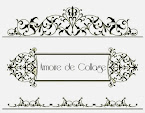Tuesday, April 17, 2012
The Sign of the Cross
The most universally known symbol is the cross, yet there isn’t another symbol with as many interpretations. One Internet source depicted as many as sixty-six variations. The most recognized are listed here, and have become an integral part of everyday life. With the approach of the Easter season, some ethical issues come into play that are discussed here within. But first, a broad overview of the most prevalent crosses…
Egyptian Ankh
The oldest know cross is the Egyptian Ankh. It was the Egyptian symbol for life and fertility, pre-dating the modern cross. It’s depicted throughout the pyramids and ruins of Egypt validating its origin.
Celtic Cross
The elaborate Celtic crosses possibly originated in Ireland, and are also found to a lesser extent in Great Britain, in churches and graveyards. The intricate, free-flowing design has fascinated graphic artists who have perpetuated the concept in modern graphic designs.
Florian Cross
Adopted as an emblem by the fire fighting service, the Florian cross is named for Saint Florian, the patron saint of firefighters. It is found on fire service badges, patches, and emblems.
Greek Cross
The Greek cross, used especially by Eastern Orthodoxy has arms of equal length and proportioned to the width. It is thought to be the model for the Red Cross logo, which has a white background, and often claimed to have been derived as the inverse of the Flag of Switzerland, which has a white Greek cross on a red background.
Mariner’s Cross
The Mariner's Cross is a stylized cross in the shape of an anchor. The Mariner's Cross is also referred to as Saint Clement's Cross in reference to the Pope Clement’s was martyred..by tying his neck to an anchor and casting him into the sea.
Maltese Cross
The Maltese cross, with arms that narrow towards the center, and are indented at the ends, is also known as the eight-pointed cross (with no curved lines). Perhaps best known as a badge of the Order of Malta; and is a common heraldic device.
Cross Pattée
Often confused with the Maltese Cross, the cross pattée (pattée, patty), has arms narrowing towards the centre, but with flat ends. It is also shown with curved inside edges as in the Iron Cross used by the former German Empire, and later awarded to German officers of the Nazi regime.
Swastika
Archaeological evidence of swastika-shaped crosses date from the Neolithic period. Though once commonly used all over much of the world, because of its wide-spread association with Nazi Germany, the symbol has become stigmatized in the Western world as a symbol of hate and evil. The swastika is an equilateral cross with its arms bent at right angles, in either right-facing (卐) form or its mirrored left-facing (卍) form. It remains widely used in Eastern and Dharmic religions such as Hinduism, Buddhism and Jainism.
Christian Cross
The Christian cross, also referred to as the Latin cross, is the most common symbol of Christianity, intended to represent the crucifixion of Jesus on the cross.
Crucifix
The most universally known cross is the Crucifix, a cross with the representation of Jesus' body affixed to it. Predominantly used in the Catholic Church, Anglican, Lutheran, and Eastern Orthodox churches, it emphasizes Christ's sacrifice— his death by crucifixion.
Crosses have always been a popular accessory, primarily for men in the form of awards and medals, and more recently, as a jewelry accessory for women. With the exception of extremists, wearing a swastika is considered taboo as a result of its tainted legacy. The Christian cross is the most widely worn cross internationally, however, wearing a crucifix is considered irreverent by some.
With the approach of Easter, the sale of crosses will pick up in area antique malls. Some say that crosses and religious medals should not be sold, comparing this to the money changers in the temple. In truth, crosses and medals should not be sold if they have been blessed, but in the secondary market, it would be impossible to know this. Most antique dealers use their discretion when handling these items, and customers typically regard the purchase of these items at antique malls no different than buying them from a religious goods store. It’s best that all parties take into consideration the purpose for which a cross is being purchased...to wear out of love and reverence.
Subscribe to:
Post Comments (Atom)




No comments:
Post a Comment